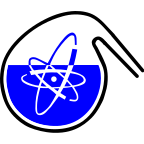Speaker
Description
Among the modern analytical methods, laser spectroscopy, Instrumental Neutron Activation (INAA), and mass spectrometry analysis are the leading techniques for the detection of trace amounts of different isotopes in complex matrices providing the breadth of information about the elemental and isotope composition [1-10].
We report on chemiluminescence of plutonium, uranium, and samarium in solutions excited by laser radiation. The details of multi-step excitation of species and time-resolved detection [1-4,8] of resulting luminescence (Time Resolved Laser Induced Fluorescence – TRLIF) and chemiluminescence (Time Resolved Laser Induced Chemiluminescence – TRLIC) are considered. In the next step, we combine the atomic laser spectroscopy with mass spectrometry detection (Resonance Ionization Mass Spectrometry – RIMS). The high sensitivity has been demonstrated for krypton isotopes (including
References
[1] I.N. Izosimov, et al., Hyperfine Interactions, 227, 271(2014).
[2] I.N. Izosimov, J. Radioanal. Nucl. Chem., 304, 207(2015).
[3] I.N. Izosimov, Procedia Chemistry, 21, 473(2016).
[4] I.N. Izosimov, Environmental Radiochemical Analysis VI, pp. 115-130, Royal Society of Chemistry Publishing, 2019. DOI: 10.1039/9781788017732-00115
[5] I. Strashnov, et al., J. Anal. Atom. Spectroscopy, 26, 1763(2011).
[6] I. Strashnov, et al., Hyperfine Interact., 227, 259(2014).
[7] I. Strashnov, et al., J. Anal. Atom. Spectroscopy, 34,1630(2019).
[8] I. Strashnov, et al. J. of Radioanal. Nucl. Chem., 322, 1437(2019).
[9] A. Vasidov, et al. J. of Radioanalytical and Nuclear Chemistry 310, 953(2016).
[10] I. Strashnov, et al. 28-ISINN Conference, Dubna, 2021, Abstract Book, p.92.

